In a world where first impressions count more than ever, mastering the art of a simple ‘hello’ can make all the difference. From breaking the ice in personal relationships to opening doors in professional environments, greetings hold a powerful sway. Understanding various greeting styles and their implications can transform interactions. Also, with the rise of digital communications, knowing how to say ‘hello’ effectively online is crucial. This blog explores these facets, offering insights into the universal importance of greetings.
The Universal Language: Why ‘Hello’ Matters More Than You Think
The Art of First Impressions Through “Hello”
Greeting someone with a ‘hello’ transcends mere acknowledgment; it’s about making positive first impressions. It sets the stage for all interactions, conveying immediate openness and warmth. These simple greetings serve as bridges between individuals, setting the mood for subsequent conversations, and establishing initial rapport. The efficiency of greetings can considerably affect how one is perceived and how smoothly interactions proceed. In addition, personalized greetings may greatly affect the receiver, making them feel more appreciated and understood, thus improving the overall interaction.
- Cultural Nuances: In Japan, bowing accompanies verbal greetings like “Konnichiwa” to show respect, which highlights the cultural importance intertwined with simple words. As an example of cultural regeneration, understanding these elements is essential for effective urban communication and community building.
- Professional Etiquette: In business a firm “Hello” or “Good morning/afternoon” establishes instant credibility when people meet in board or conference rooms. These greetings set expectations for professionalism in a business environment.
- Informal Settings: A casual “Hey” or “Hi there” among friends communicates familiarity and relaxation. These casual greetings help in reinforcing social bonds with easy and approachable ways to exchange pleasantries.
The appropriate greeting can significantly influence the success of any encounter, especially as digital hello interactions continue growing with contact less communication in focus. Remembering that each ‘hello‘ is not merely a routine exchange but an opportunity to create meaningful relationships improves the flow of every interaction.
The Psychological Impact of Greetings
A simple greeting like ‘hello‘ carries profound psychological weight. It validates the presence and acknowledgment of an individual. The feeling of being recognized and welcomed can significantly improve mood and self-esteem. This acknowledgment is crucial in establishing trust and comfort. By greeting someone appropriately, you encourage positive emotional responses from the very beginning, setting the framework for regeneration of community and individual spirits. Recognizing the power of basic greetings is essential in fostering better communication, increased social cohesion, and greater personal well-being.
- Mood Enhancement: Hearing a cheerful “Hello” can instantly lift spirits and establish a positive emotional state, making the day better. For instance, a cheerful greeting increases community engagement and happiness in urban developments, facilitating effective urban regeneration.
- Trust Building: A formal greeting such as “Good morning” in a professional context conveys respect and sincerity, fostering mutual trust between parties. Demonstrations of professionalism and reliability can greatly improve cooperation among different teams.
- Social Inclusion: A simple “Hi there” to someone new or feeling isolated can create a sense of belonging and inclusion, connecting individuals. Ensuring everyone does this will boost general societal cohesion.
The act of greeting is thus not merely ceremonial; it resonates with essential human needs for recognition and social connection. This understanding is essential for improving interpersonal dynamics and helping individuals to engage effectively in any social situation. These strategies contribute to creating a more connected, inclusive and harmonious interpersonal society, starting with as little as a genuine ‘hello‘.

From ‘Hi There’ to Formal Salutations: Navigating Greeting Styles
Adapting “Hello” Based on Context
Greeting styles vary significantly depending on the environment, requiring adaptability to ensure effective communication. In casual situations, a simple “hi there” or “hey” is often fitting, showing friendliness and informality. However, professional or formal scenarios may necessitate more respectful greetings such as “good morning,” “good afternoon,” or a polite “greetings.” Understanding and appropriately adjusting your salutations based on context can greatly enhance professional relationships and communication effectiveness. Proper greeting choices ensure that messages are not only received clearly but also respectfully acknowledge the receiver, crucial for fostering positive interactions.
- Professional Settings: When meeting clients or superiors, using formal terms like “Good morning/afternoon, Mr./Ms. [Last Name]” demonstrates respect and professionalism, strengthening professional communication.
- Casual Encounters: Among peers, a relaxed “Hey” or “What’s up?” can efficiently convey camaraderie and familiarity, making interactions more comfortable.
- Email Communication: Starting an email with “Dear [Name]” in business correspondence versus “Hi [Name]” in friendlier exchanges sets an appropriate tone for the message. For example, the tone of an email helps to indicate the intention of liver regeneration scientists communicating findings with each other.
The ability to modify your welcome in different social, professional, and cultural environments is essential for effective communication, ensuring that every interaction starts on the right foot. In today’s increasingly digitized world, understanding when to use digital hello messages versus conventional forms of greetings can also greatly contribute to success in all forms of communication.
The Nuances of “Welcome” in Different Interactions
Choosing the right greeting is essential because it immediately sets the tone for any interaction. While “hi there” is handy for casual conversations, a more formal “good morning” is essential in professional environments or when addressing someone you do not know well. The appropriateness of your salutations reflects respect and consideration, paving the way for productive communication. Recognizing these nuances helps in building stronger relationships, whether personal or professional, through considerate and context-aligned communication styles. By mastering these subtle yet significant aspects of communication, one can navigate social and professional landscapes with increased confidence and ease.
- Formal Business Meetings: A firm handshake accompanied by “Good morning/afternoon” shows respect, sets a professional tone, and facilitates effective communication.
- Casual Social Gatherings: A simple “Hello” or “Hey, how’s it going?” sets a relaxed, friendly vibe, promoting comfort and openness among attendees. An inclusive environment is important, especially in areas that have benefited from urban regeneration company processes.
- Digital Interactions: Using “Dear [Name]” in emails ensures a professional tone, while a quick “Hi [Name]” is adequate for instant messages among colleagues.
Using the proper form of welcome is key to fostering excellent first impressions and strengthening overall communication. Picking the proper form of greetings fosters understanding and respect, making every encounter more productive and pleasant. Furthermore, being mindful of cultural customs while using greetings may demonstrate sensitivity and respect when interacting with others from all walks of life.

Beyond the Words: Non-Verbal Cues to Elevate Your ‘Hello’
Silent Signals: Enhancing Greetings with Body Language
Communication goes beyond spoken language, with non-verbal cues playing a major role in how a ‘Hello‘ is received. Simple gestures such as a smile, sustained eye contact, and open body language can greatly improve the impact of your greetings. These cues add depth, sincerity, and warmth to any introduction, transforming a standard greeting into a meaningful interaction. Being aware of and using these non-verbal signals effectively can create a more memorable and engaging first impression. Such subtleties can change the tone of your communications, fostering deeper connections and enhancing mutual respect from the initial exchange.
- Facial Expressions: A genuine smile conveys approachability, indicating warmth and sincerity in your greetings. Such openness is vital in creating positive first impressions and encouraging further interaction.
- Eye Contact: Maintaining eye contact signifies confidence and attentiveness. This shows that you are genuinely engaged with the person you are greeting, promoting trust and connection from the start.
- Body Posture: Adopting an open and relaxed posture communicates receptiveness. This helps in making others feel comfortable and valued, thus setting a positive stage for ongoing conversations. This approach to open communication should also be a standard in areas receiving assistance from an urban regeneration company.
The Art of Non-Verbal Communication in Formal Greetings
In formal settings, non-verbal communication greatly impacts the perception of respect and professionalism during initial salutations. A firm handshake, accompanied by direct eye contact and an upright posture, conveys confidence and sincerity. These actions reinforce the spoken words, projecting an image of competence and trustworthiness. The effective use of non-verbal cues in formal interactions helps establish credibility and respect, which are essential for building strong professional relationships. Ensuring that your body language aligns with your verbal welcome reinforces professionalism, which is especially important when engaging in sensitive communications that could affect liver regeneration research.
- Handshake Technique: Giving a solid, but not overpowering, handshake shows respect and confidence, which are fundamental in professional circles.
- Attentive Listening: Nodding while someone speaks during a “Hello” exchange suggests engagement and encourages further discussion, fostering mutual respect.
- Respectful Distance: Maintaining an appropriate personal space helps in showing respect for personal boundaries. This builds trust in building effective professional relationships.

Digital Hellos and Virtual Greetings: Connecting in the Modern Age
Crafting Effective Digital Greetings
In today’s digital world, crafting effective digital greetings is essential for making positive virtual connections. Unlike face-to-face interactions, digital hellos such as emails, social media messages, and video conference intros depend heavily on carefully chosen words to convey warmth and professionalism. Tailoring your salutations to the specific digital medium and audience enhances engagement and fosters constructive interactions. Whether it’s a formal “Dear” in an email or a casual “Hi” in a team chat, the correct digital welcome can significantly influence how you’re perceived in a virtual setting, shaping the dynamics of future conversations and collaborations.
- Email Introductions: Use “Dear [Name]” for formal emails to create a respectful impression, or “Hi [Name],” when writing to team members. Tailoring the email’s salutation helps the recipient understand your intent.
- Social Media: Start with a simple “Hello [Name],” on networks such as LinkedIn for professionalism, as most people on LinkedIn are seeking business. Conversely, a “Hey!” may be suited to friendlier platforms like Facebook.
- Video Conferences: Begin with a cheerful “Good morning/afternoon, everyone,” to signal enthusiasm and respect. For instance, an enthusiastic greeting will improve people’s perception of an urban regeneration company presenting their results.
Understanding these digital greetings nuances helps cultivate robust engagement, thus ensuring that your message is received positively and resonates with the receiver. Effective digital communication starts with a thoughtful, well-crafted welcome, tailored to the specific virtual atmosphere. Such adaptation helps establish a positive premise for all kinds of virtual interactions, starting with digital hello messages in various formats.
Virtual Etiquette: The Do’s and Don’ts of Online Greetings
Navigating the etiquette of online greetings is crucial for maintaining professionalism and fostering good virtual relationships. The dos include personalizing your salutations based on the audience, responding promptly to messages, and keeping hellos brief and respectful. Conversely, the don’ts involve using overly casual language in professional settings, ignoring greetings, and launching straight into business without acknowledgment. Adhering to these guidelines helps in building trust and respect in a virtual context. These practices ensure that all your digital interactions start positively, strengthening online connections and paving the way for productive collaborations. By mastering these online welcome etiquettes, you not only enhance your professional image but also contribute to regeneration projects that support effective digital communications.
- Personalize Appropriately: Always address individuals by name when starting an email or message, showing respect and consideration, and tailoring responses to individual personalities.
- Acknowledge Promptly: Respond to greetings and messages quickly, especially in professional contexts, to demonstrate attentiveness and respect for others’ time.
- Maintain Brevity: Keep your hellos succinct, transitioning smoothly to the purpose of your communication without excessive preamble, particularly in formal settings.
Regeneration: Discover the Power of Vitalica Wellness
Holistic Healing Through Craniosacral Therapy and Acupuncture
Enhanced Physical and Mental Well-being via Yoga Retreats and Physiotherapy
Effective Detox and Immunity Boost with Bitter Diet Programs
Frequently Asked Questions
Why is a simple ‘Hello’ so important in daily interactions?
How do non-verbal cues enhance the impact of formal greetings?
What constitutes appropriate greetings etiquette in digital communications?
In what ways can a ‘Digital Hello’ be crafted to maximize engagement?
Unlock holistic healing and personalized wellness solutions tailored to your needs.
